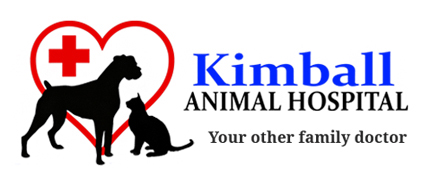Library
-
With all cancer management strategies, providing optimal nutrition for your dog is essential. The metabolic effects of cancer will persist after treatment but with your veterinarian’s guidance, you can adjust your dog’s nutrient profile and potentially avoid some of these negative side effects. Carbohydrates promote cancer cell growth, while cancer cells have a difficult time using fat as an energy source, so foods that are relatively high in fat and low in carbohydrate may benefit dogs with cancer. The effects of surgery, chemotherapy, and radiation therapy will be considered when your veterinarian advises a nutrient profile, formulation, quantity, and delivery method for your dog.
-
Selecting your dog’s food is a choice you make to support their health and well-being for each of their life stages. Complete and balanced commercial dog foods are designed to have specific nutrient profiles, and different diet types are available for healthy dogs or those with a medical condition. Your veterinarian is always ready to help you make the best nutritional choices for your dog.
-
Rabbits are herbivores and are considered grazers. Rabbits should have a daily diet of mostly hay, a smaller amount of fresh vegetables, and a limited number of pellets. Hay is the most important part of a rabbit's daily intake. Over-feeding pellets is a common cause of obesity and soft stool. Rabbits must be fed and provided with fresh water daily. Hay should always be available. A pet rabbit's diet should be supplemented with a variety of leafy green vegetables every day. The high sugar content in fruits (and even carrots) may upset the normal GI tract bacteria if given in excess.
-
Once your cat has reached adulthood, their nutrient profile will change from when they were a kitten. Your veterinarian can help you determine what proportion of each nutrient is needed based on your cat's lifestyle and current body condition. It is important to lay a good nutritional foundation to maximize the health and longevity for your cat and reduce the potential for developing obesity.
-
Once your dog reaches adulthood, his nutrient profile changes from when he was a puppy. Your veterinarian can help you determine what proportion of each nutrient is needed based on your dog’s lifestyle and current body condition. Avoid free-feeding and work on a meal schedule. Following these steps can help your dog lead a healthier life and avoid becoming overweight or obese.
-
Food allergies can be problematic for many cats, especially after years on the same diet. Clinical signs may manifest as gastrointestinal or skin problems. Animal proteins are the most common causes and strict avoidance is the best way to treat affected cats. An 8 to 12-week elimination diet trial on a special veterinary diet is the only definitive method to diagnose a food allergy and, in some cases, the veterinary diet may need to be continued long-term.
-
Food allergies can be problematic for many dogs, especially after years on the same diet. Clinical signs may manifest as gastrointestinal or skin problems. Some animal proteins are the most common causes and strict avoidance is the best way to treat affected dogs. An eight to twelve-week elimination diet trial on a special veterinary diet is the only definitive method to diagnose a food allergy and, in some cases, the veterinary diet may need to be continued long-term.
-
Adverse food reactions in dogs are either caused by food allergy – an immune response to something ingested or food intolerance – a non-immunological response to something ingested. Signs of food intolerance are usually only digestive in nature. Food intolerance will generally occur on the initial exposure to the food or food additive in contrast to food allergy which requires repeated exposures to develop. Different causes of food intolerance include food poisoning, or inappropriate ingestion of an irritant, reaction to food additives, histamine reactions, lactose intolerance and dietary indiscretion such as eating fat or bones. A dietary history is important in diagnosing these conditions.
-
A gastrostomy (G-) tube is a small rubber or silicone tube that passes directly into the stomach through the cat’s skin and abdominal wall. It allows you to deliver food, water, and medications directly into the stomach. This article outlines how to use and maintain a G-tube for your cat.
-
A gastrostomy (G-) tube is a small rubber or silicone tube that passes directly into the stomach through the dog’s skin and abdominal wall. It allows you to deliver food, water, and medications directly into the stomach. This article outlines how to use and maintain a G-tube for your dog.

